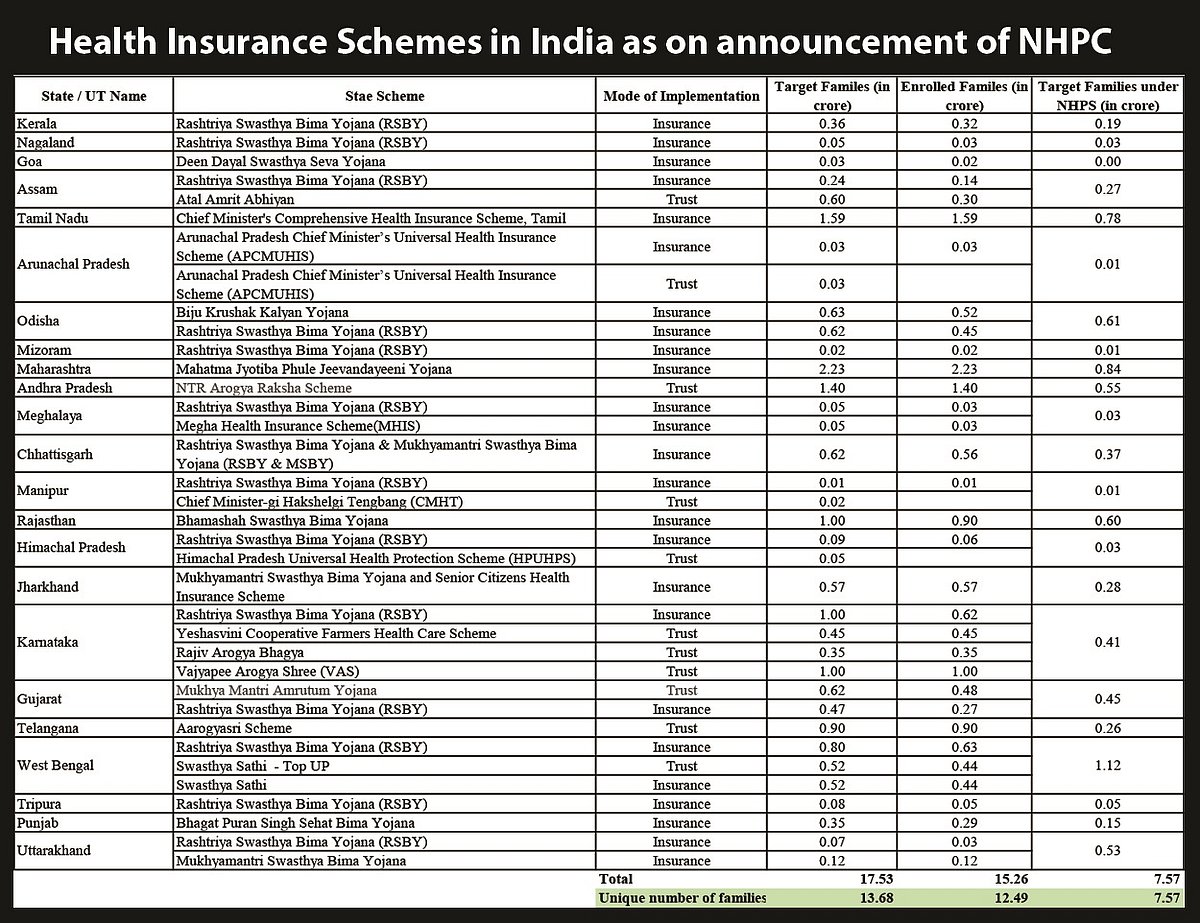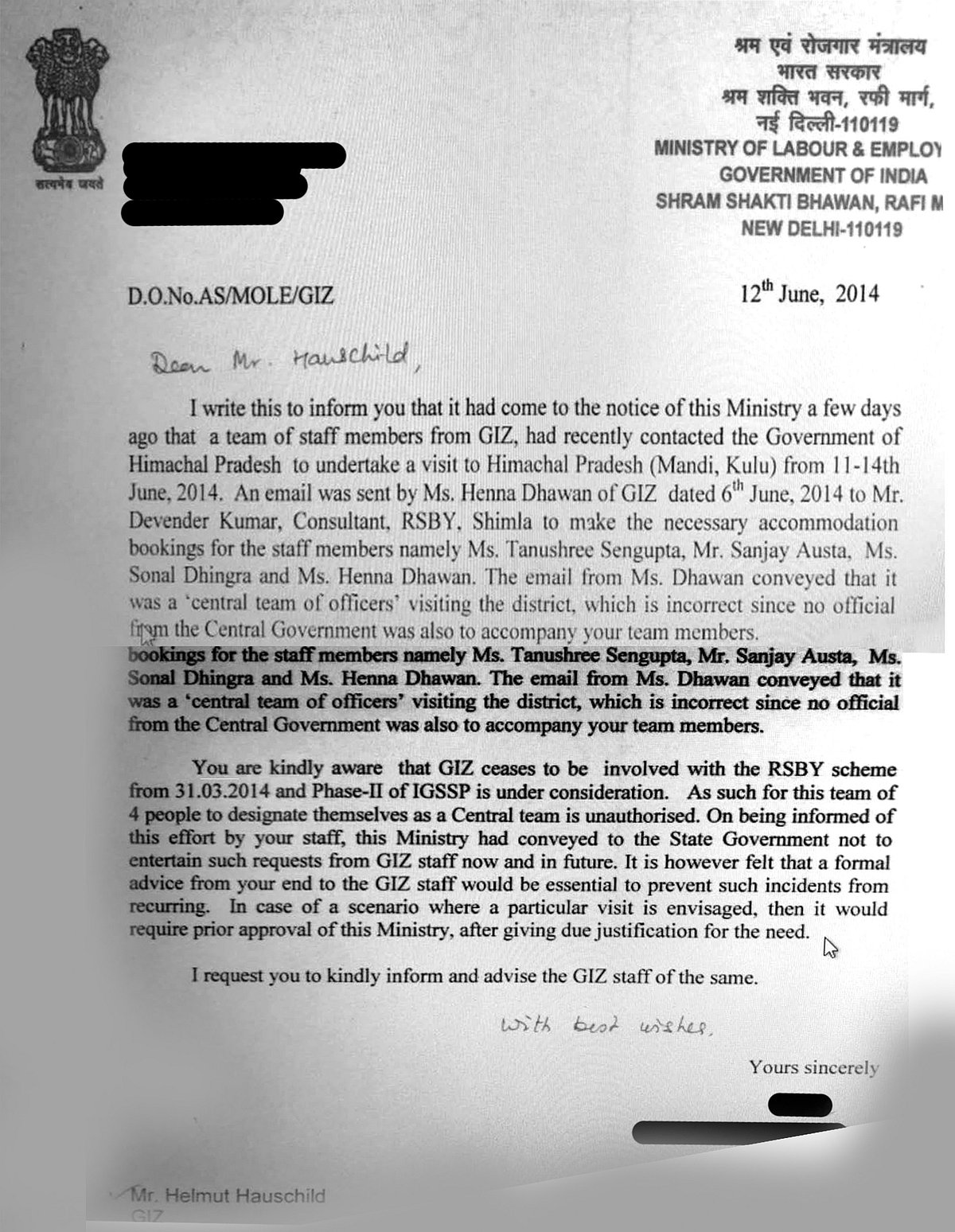Ayushman Bharat: Seven things that prove PM Modi’s lying to India
A closer analysis of the scheme suggests that it has opened new avenues for corruption instead of improving access of the poor and needy to quality medical care

Prime Minister Narendra Modi has rolled out a mega healthcare scheme, Pradhan Mantri Jan Arogya Abhiyaan, popularly known as Ayushman Bharat or National Health Protection Mission in September, declaring that it was world’s largest healthcare initiative which would serve a population that is equal to 27-28 European countries.
“The beneficiaries are almost equal to the population of Canada, Mexico and US put together,” announced the Prime Minister, claiming that the government scheme was going to be a “game-changer” in terms of serving the poor and needy. But is the new government policy really helping the underprivileged—who were earlier deprived of healthcare facilities, since it’s formal launch on September 25 that marked the birth anniversary of Pandit Deendayal Upadhyay?
Contrary to the tall claims of the Prime Minister, a close analysis of the scheme suggests that the government initiative is neither world’s biggest healthcare scheme nor it is as effective as being projected by the government. Rather, according to experts, the policy has a “faulty design” which opens avenues for corruption, and more importantly, undermines the constitutional authorities of the states.
Here’re seven facts that Prime Minister Narendra Modi, Union Health Ministry and the BJP won’t like the country to know about much hyped new healthcare scheme:
1. Biggest ever healthcare scheme?
PM Modi has been telling the country that Ayushman Bharat is the biggest ever healthcare scheme, covering 10.74 crore families and promising cashless healthcare services, amounting up to ₹5 lakh per individual, across the country in both public as well as private sectors.
However, documents accessed and analysed by National Herald reveal that an overzealous Prime Minister has exaggerated the number of beneficiaries covered under the scheme.
The truth is that various states had been running their own health schemes successfully, which collectively covered much more population than Ayushman Bharat intends to cover.
As per official data put up by health ministries of various states, more than 12 crore families were already getting benefits of free healthcare under various states’ sponsored schemes, as on the date of announcement of Ayushman Bharat.
Maharashtra government’s scheme Mahatma Jyotiba Phule Jan Arogya Yojana, for instance, provides free quality healthcare, critical for approximately 2.2 crore low- income families whereas Ayushman Bharat intends to cover only 83 lakh families in the state. Similarly, while Goa’s healthcare scheme is a universal one and provides a free health cover to 2.25 lakh families, Ayushman Bharat proposes to provide a cover for only 37,000 families in the state.

2. German company with a chequered past roped in
During a public function in Ranchi, PM Modi, while talking about the new scheme, showcased his pro-poor image and blamed previous UPA government for corruption in various government schemes. He said that previous governments, who had governed in the name of the poor, had looted the government exchequer the most. He parroted his most predictable lines about his government’s guiding principle: “Sabka Saath, Sabka Vikas.”
Ironically, Modi government has roped in a German technical assistance agency – GIZ as a consultant for Ayushman Bharat despite knowing it’s tainted past.
A source who wish to remain unnamed told NH that Programme Director at GIZ, Nishant Jain, who is considered very close to Dinesh Arora, deputy chief executive officer of Ayushman Bharat, has allegedly favoured the lobby groups by framing the scheme in a manner that favoured the stakeholders.
“Jain, in fact, personally owns stakes through relatives, who operate as vendors of software, smear cards TPAs…,” said the source.
That the firm has now been engaged once again by the Ministry of Health in the formulation of policy guidelines for Ayushman Bharat raises many questions about the holier-than-thou claims of the Modi government.

3. Using dated data to leave out beneficiaries
PM Modi claimed that the scheme is a game-changer vis-à-vis healthcare facilities available to the poor and underprivileged in the country. Modi envisaged around 10 crore families to be covered under the Ayushman Bharat.
However, it turns out that the census data on which the Ayushman Bharat has been conceptualised is at least seven years old, having been obtained during the last Socio Economic and Caste Census which took place in 2011.
Additionally, how many people would fulfil the criteria to be eligible under the deprivation list remains to be verified.
Moreover, as highly placed sources, privy to the implementation of the scheme, disclosed, the Modi government is trying to cut the number of beneficiaries. Rationale behind the cut is: benefits would be provided only to those families who still qualify under the deprivation list, seven years after it was published. Rest of the families which no longer fit the criteria would not be given the benefit of the scheme.
Sources said that a possible reeason could be a late realisation that the government didn’t have enough money to fund the tall promises made by the Prime Minister.
4. Transparency crisis
Modi government claims to have appointed Third Party Administrators (TPAs) to ease the process of implementation of the scheme. But many believe that it has been deliberately done to benefit people closer to the ruling party. The TPAs get paid for the processing claims if even they are fraudulent.
According to sources, TPAs have mostly been awarded to persons, companies, etc close to the BJP-RSS.
5. One too many chances to ‘corrupt’ hospitals
As many as 13,000 hospitals have been coordinated for implementation of the Ayushman Bharat in the country, boasted PM Modi in Ranchi. But, analysts feel that it is the healthcare infrastructure that matters, not the numbers.
A careful study of the tender documents of the Ayushman Bharat reveal that de-empanelling or debarring a hospital from the scheme has been made so difficult that even in case of the serious corruption, it would be difficult to de-empanel them.
Fraud has been classified into five categories and no hospital can be debarred unless fraud is committed thrice in a single category. A clear interpretation is that the hospitals can keep offending under different categories (without exceeding the limit under a certain category), but will get at least 10 chances before they can be referred to a committee which would hear their case.
Further, the scheme has a provision for automatic empanelment of hospitals, which were empanelled under the preceding healthcare scheme Rashtriya Swasthya Bima Yojana. It is a widely known fact that a lot of hospitals which got empanelled under the scheme had poor infrastructure and were not fit enough for the empanelment. The automatic inclusion of such hospitals without field visit would prove disastrous for the on-ground implementation of the scheme, experts point out.
6.Cash incentives not a good idea
Ayushman Bharat proposes to incentivise surgeries at the government hospitals under the new scheme. The idea that the doctors in government hospitals would get cash incentives for surgeries is a flawed one, according to experts. Apprehending unethical medical practices, they said that the intended move is likely to promote surgeries even in such cases where it’s actually not required.
7. Diverting public funds to the BJP?
Launching a toll-free number (14555) for creating awareness over the scheme, PM Modi had claimed that Ayushman Bharat will be a role model for all future healthcare schemes. But, analysts feel otherwise. They claim that the Modi government adopted trust model, rejecting the tried and tested, decades-old insurance model with the sole purpose to divert public fund to BJP’s coffers. Since no claims would be denied or verified under the trust model, it provides ample scope for corruption.
Follow us on: Facebook, Twitter, Google News, Instagram
Join our official telegram channel (@nationalherald) and stay updated with the latest headlines
